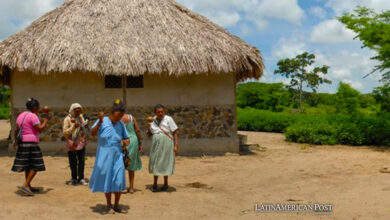Reforestation in Latin American Cities
Reforestation in cities is bearing fruit in large Latin American capitals. We tell you about some cases and why it is important to recover native forests.

Photo: Pexels
LatinAmerican Post | Jorge F. Vuelvas Lomeli
Listen to this article
Leer en español: Reforestación de bosques en ciudades latinoamericanas
Increasing urbanization in Latin America has led to increased concern for the preservation and restoration of natural ecosystems in and around cities. In response to this concern, various cities have implemented reforestation programs to protect and recover their forests and ecosystems. Three outstanding projects are the "Refloresta Rio" in Rio de Janeiro, Brazil; the reforestation of the Eastern Hills in Bogotá, Colombia; and the Bosque de Chapultepec in Mexico City.
We suggest you read: Willow Project: US Government Approved a Mega-Project for the Extraction of Oil and Gas in Alaska
"Refloresta Rio" in Rio de Janeiro, Brazil
The Refloresta Rio program is an initiative that has been implemented by the Rio de Janeiro mayor's office for more than three decades, with the aim of addressing environmental problems facing the city, such as landslides and floods. The Ministry of the Environment is the entity in charge of carrying out the program.
The active participation of the community, especially the most vulnerable communities, has been one of the keys to the success of the program. This collaboration has allowed the residents of Rio de Janeiro to become directly involved in the preservation and restoration of the environment, thus contributing to improving their quality of life.
The program aims to not only improve the city's landscape, but also provide environmental benefits, such as the restoration of biodiversity and the protection of springs and the drainage network, which decreases the risk of landslides and floods. In addition, it seeks to protect and accelerate the regeneration of forests in the Municipality's Areas of Environmental Interest, uniting forest fragments and forming ecological corridors.
Another of the objectives of the program is to avoid the construction of houses and the development of activities that could harm the environment. It also supports civil society initiatives in defense of preservation areas, promotes environmental education, and encourages the democratization of government-community relations. This initiative is important because it seeks to improve the quality of the city's environment, generating work and income for neighboring populations.
Reforestation of the Eastern Hills of Bogotá
The reforestation of the Eastern Hills of Bogotá becomes crucial to protect the high Andean forest and its biodiversity. This ecosystem, made up mainly of oaks, encenillos and tíbares, is essential for the protection of the soil and the prevention of landslide and avalanche risks in the area. Currently, the Regional Autonomous Corporation of Cundinamarca (CAR) manages a protective forest reserve in the Eastern Hills, with trails enabled so that Bogota citizens can access this natural and cultural treasure safely and easily.
However, the Eastern Hills face the problem of invasive species, such as pine and eucalyptus, introduced in the 1970s in a failed attempt to reforest the area. The dryness of the soil and the inhibition of the growth of other species were some of the consequences of this action. The restoration process involves removing pine and eucalyptus trees, encouraging the growth of the Andean forest, and stimulating the reproduction of plants capable of adapting to bare soil. Once these species have grown sufficiently, they begin to provide shade and food for other second generation plants, which attract birds and contribute to the growth of the forest. This restoration process is based on the natural process of succession, and it is a slow process, but nature is extraordinarily resilient.
The reforestation of the Eastern Hills of Bogotá has important environmental benefits, such as carbon sequestration. In addition, the forests generate microclimates and regulate the climatic processes that originate in the Orinoquía or from the Pacific, which contributes to stability. It is also worth highlighting the water regulation provided by the forests, since they feed many of the streams that feed the Bogotá aqueduct system.
Finally, the Eastern Hills are home to exceptional biodiversity, making them one of the most essential centers of endemism and biodiversity in South America. With species of birds, marsupials, cusumbos (Andean coati), foxes, woolly ocelots, frogs, several species of lizards, and a myriad of invertebrates, from insects to arachnids, the Eastern Hills are an invaluable natural and cultural treasure for Bogotá.
Reforestation of the Chapultepec Forest in Mexico City
The government of Mexico City has launched a reforestation initiative in the Chapultepec Forrest, one of the most important ecosystems surrounding the city. In the first stage of environmental restoration, 24,000 trees, 12,000 shrubs and two hectares of herbaceous plants were planted, achieving a survival rate of 80% in reforestation.
Now, as part of the Chapultepec Forest Project: Nature and Culture, the Ministry of the Environment has reported that 24,000 trees, 12,000 shrubs and two hectares of herbaceous plants have been planted in the third section of the forest. Agroforestry techniques have been used that guarantee the necessary humidity for the survival of the plants, which has allowed reaching a survival rate of 80% of the species planted in an area of 40 hectares in the Clausell and South Biocultural Zone areas.
Soil restoration has also been crucial for the success of reforestation, since organic matter from the pruning of herbs and shrubs and the grinding of standing dead trees has been incorporated. The species chosen for revegetation have been selected for their high adaptability to the climatic conditions predicted for the coming years and their ability to thrive in the area. Among the trees planted stand out White cedar, Pinus cembroides, Ayacahuite pine, Patula pine, White oak, Colorín, Fresno, Oak oak, Cazahuate, Tepozán, Capulín and Tejocote.
The local Ministry of the Environment has remained firm regarding the budgetary availability for this project, since it intends to improve the environment and the air quality of the Mexican megalopolis. According to the authorities themselves, the necessary restoration work will continue, because the reforestation of this important ecosystem is not only crucial for biodiversity, but also for the well-being of the inhabitants of the Mexican capital.




